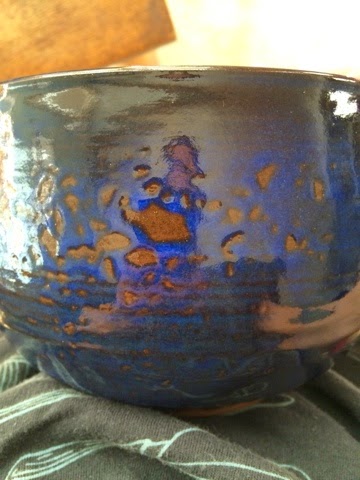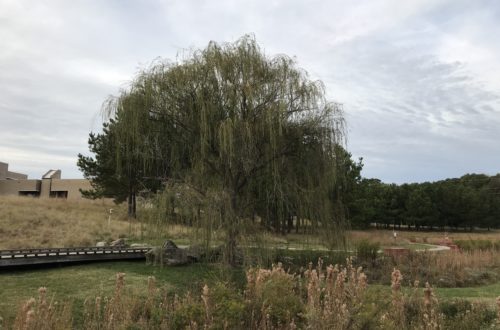Kiln Unloading
Well… I just unloaded the kiln, and there were some real boogers in there. I used an earthen red clay that I was told could be pushed to cone 5 that didn’t perform well with the glaze. The indigo float pulled away from the clay. The small platter that I put on stilts completely slumped. A few pieces were okay, but still weren’t everything I had hoped they would be. I will definitely not be using this clay with my current glazes again. I may end up just using the remaining clay to make more tiles to protect the kiln shelves. One of those got some severe runs from a bowl that just dropped glaze off the sides. Some of the glaze made it all the way to the kiln floor, which is NOT GOOD. I’m not sure how we will deal with that. When your floor is covered with new pieces that didn’t turn out at you hoped, and your kids meanwhile won’t try the banana nut bread you just pulled out of the oven, it’s hard not to feel like a total failure and start planning on how you will sell your equipment and ship off the kids to boarding school. But if you’ve been doing this for a few years, you step back and say, okay, what can we salvage here? What was good? What can I change. Well first things first, I’ll wrap up one of those loaves and take it to someone who will appreciate it and shove the rest of the other INTO MY BELLEH.
The glazes didn’t behave as usual on the speckled brownstone. I’m trying to figure out if it was the firing or the glaze application or something else. When I began the firing on Wednesday, it was 75 degrees outside. When I unloaded this morning, it was 21 degrees outside. Could that have something to do with the firing? I don’t know. Anyhow, there are several pieces like this one that just didn’t turn out. There’s no way to salvage them, except to say, “I learned something.”
As for the indigo float, I was at the bottom of the bucket on half the pieces, and pulled out a new bucket for the rest. The old bucket was pretty thick, and the new bucket was very thin, so the results were quite varied. This indigo float is usually a stable glaze. There were two pieces that I washed off and re-glazed, and those were by far the worst.
When I sieved the pistachio, there was a lot of large precipitate that looked like chunks of glass, which I’m guessing was due to the really low temps we had a few weeks back. I had also thinned it out too much trying to get some of that precipitate to break back up. So the usual blend of light brown and pale green was more just light brown. I don’t know what the precipitate was, but I know that not having that mineral in the mix had to have changed the resulting colors. There were also a few rough patches like in the bottom of the canister on the left. I don’t know what caused that. It’s not terrible, but it’s also not how the glaze usually performs.
Another point – shino works best with textures. The pistachio glaze is a shino, and where drips run down the sides, it has a lovely effect.
However, on the inside of this bowl where there in an uneven application of shino and no texture to work with, the glaze is not at its best.
See the difference below? Texture puts the shino to task.
And more pistachio shino below showing the difference in results. The holed canister highlights all the runs and how the breaks in surface create some fun effects.
The indigo float behaved mostly as expected on the speckled brownstone, but there were a few spots where the glaze seemed to slide off the side.
The large mugs mostly turned out great.
I pulled out the “happy” pieces for a group shot.












